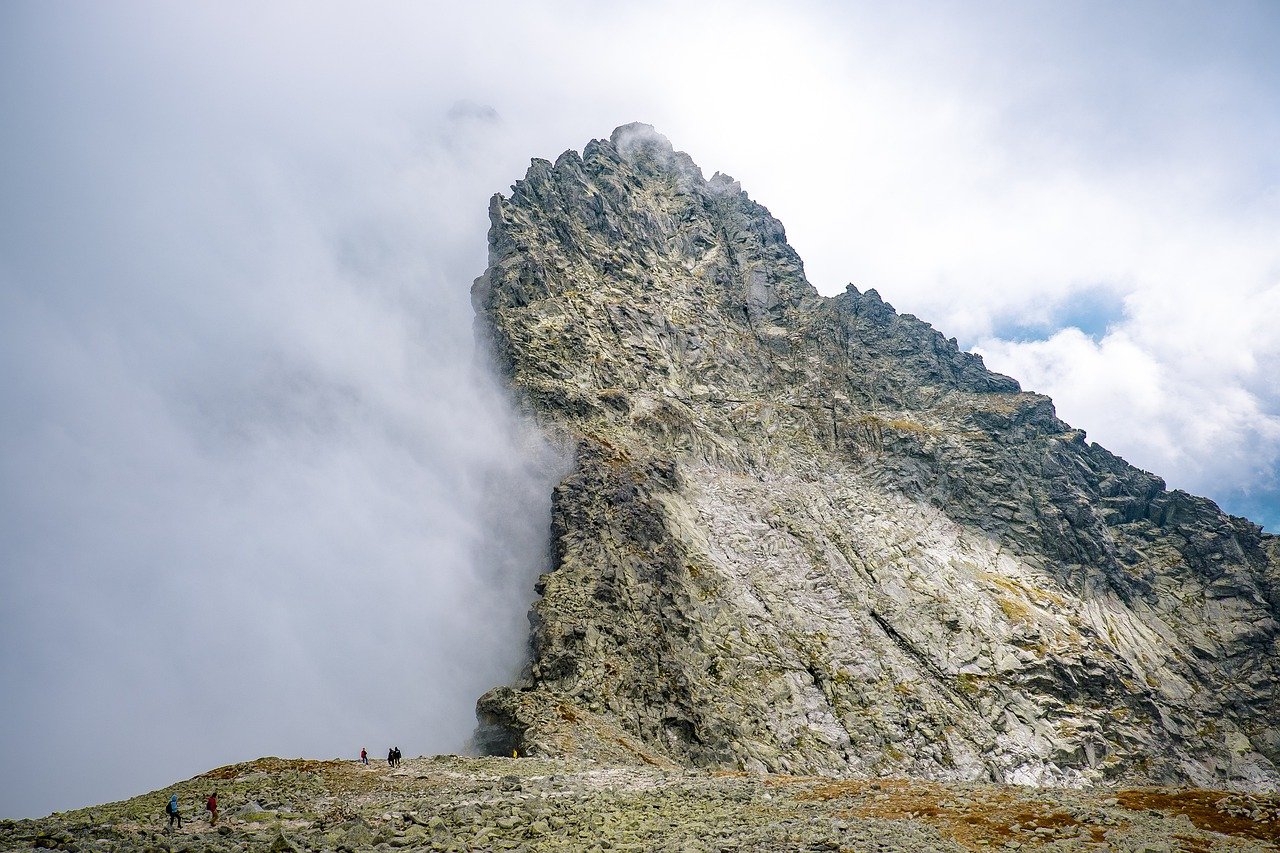
“Mountains are exhausting, forcing you to walk either uphill or downhill. The closer you get to the Alps, the harder you feel breathing; not because of altitude, but due to the rock walls blocking the view of the sky.”
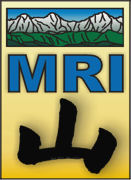 First MRI logo in 2003These were the words of my mother, who had grown up in a region where the highest elevation – the ‘Mühleberg’ – reached just 16 meters. What a strange twist of fate that my professional career would irrevocably link me to mountains until the present day!
First MRI logo in 2003These were the words of my mother, who had grown up in a region where the highest elevation – the ‘Mühleberg’ – reached just 16 meters. What a strange twist of fate that my professional career would irrevocably link me to mountains until the present day!
When I took my post as MRI Program Manager in 2003, I had just completed my PhD. Five years in the Nepalese Himalayas had awarded me with a kind of ‘mountain label’ in my CV, which was likely the reason why I qualified for the MRI position. Yet, entering the world of international research coordination was like a jump to the moon! I had left behind the comforting reality of down-to-earth field work. Now, I was confronted with intangible MRI coordination tasks with intended – yet not guaranteed – future impacts thinly spread across the globe. All the greater was the potential for learnings! Here, I would like to share three of them.
The Mountain Glue
Scientists and practitioners devoting their work to mountains are tied together by a strong sense of identity, and in the same vein by a strong sense of belonging. They are all part of a larger family: the MRI community. Ancient, awesome, and rather complicated mountains serve as a common anchor for an otherwise highly diverse and scattered group. Accordingly, the coordination of mountain researchers and practitioners across several continents was never tedious, but rather resembled an easy harvest of knowledge, expertise, and a sincere interest in collaboration. Obviously, the mountain research community existed long before the establishment of the MRI and its regional networks. The official launch of mountain research networks such as MRI Europe (2007), the Science for the Carpathian S4C initiative (2008), the Southeastern European Mountain Research network SEEMORE (2009), the Swiss-Austrian Alliance (2013), and the numerous mountain research networks on other continents, however, were decisive for giving the research community – and mountains – a voice (cf. Björnsen 2010). It was a great privilege to experience the power that emanates from such an extraordinary, glued-together peer group!
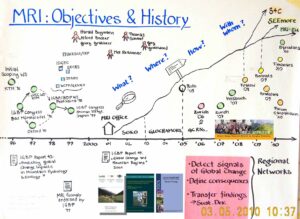
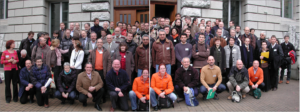
Outside the Petri Dish
In my early days with the MRI, my understanding of the rules and mechanisms of the academic world was very modest. My scientific world-view was confined to the cycle of fund-raising > data collection > publishing and > fund-raising again; it would have fit into a petri dish, completely disregarding the larger laboratory and realities outside the confined world of my PhD. Exposure to the MRI world allowed me to discover the various forces facilitating and enabling the petri dish-like project work I had encountered in my early career. I learned to appreciate the efforts of national and international funding institutions setting the stage for concerted actions. For the first time I realized the key role of lobbying activists in Brussels, making sure that the voice of the mountain community was heard. I started recognizing the importance of cultivating the science-policy interface for actually generating impact. And I experienced the power of networks, joint visions (Becker & Bugmann 2001), coordinated research (e.g., GLOCHAMORE Research Strategy), and international cooperation. One thing became very clear: managing an international coordination office might sound simple, but it is in fact a highly demanding task that not only requires a scientific mind but many other skills and qualities. Mountain research is a large laboratory, not a petri dish!
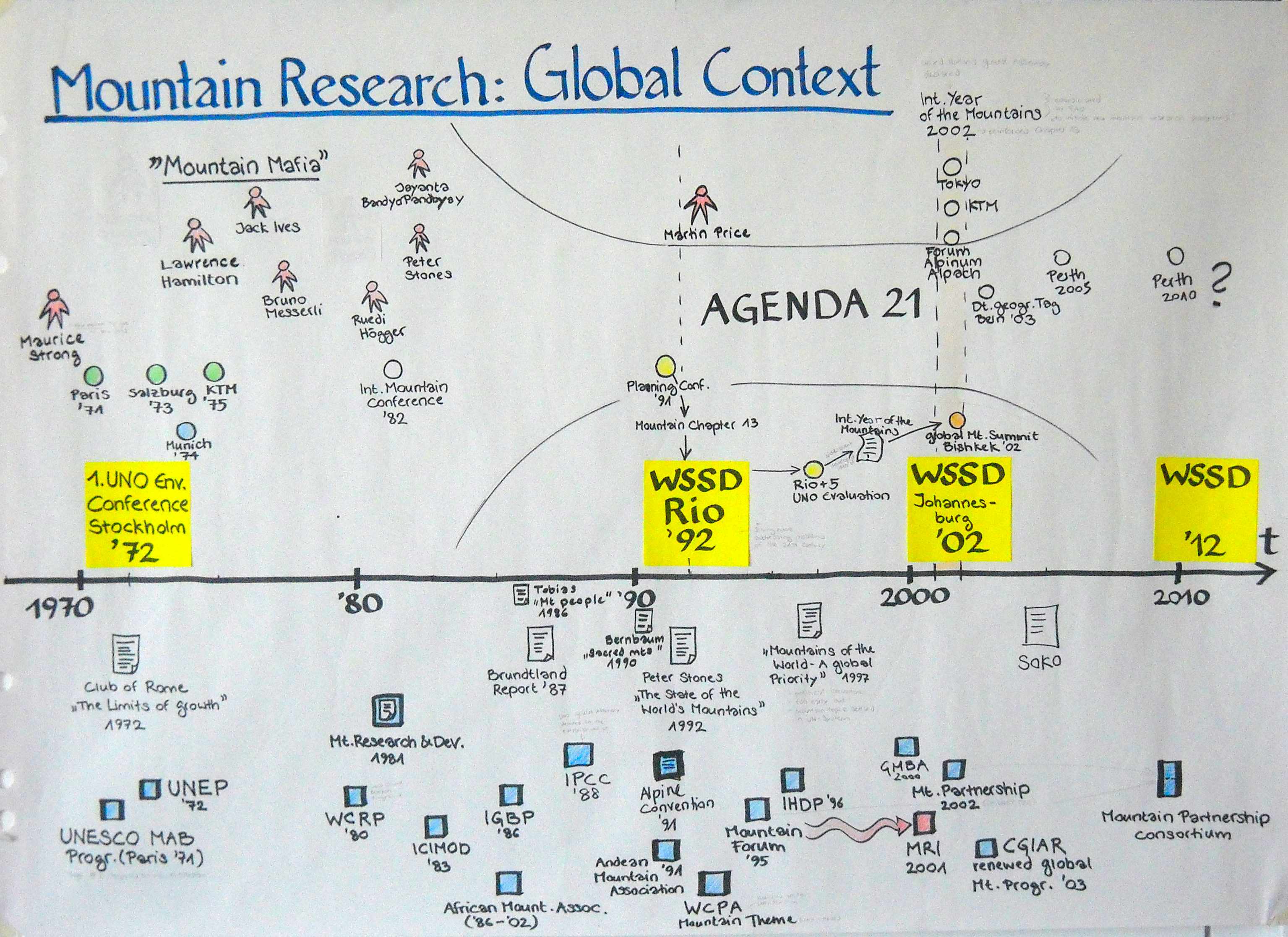
Behind the Mountains
From the onset, the MRI team has been proud of being interdisciplinary – and sometimes even transdisciplinary! All MRI meetings had been of a highly integrative nature and the partnership with the Austrian Institute of Interdisciplinary Mountain Research (IGF) from 2008 onwards, for example, was just a logical consequence. It looked like we were truly holistic, covering everything thinkable!
It was only after leaving the MRI in 2012 that I discovered research communities and themes hidden behind the mountains. Although the famous Perth Conferences (Perth I, II and III) aimed to describe the current state of global mountain research and identify fields for future coordinated action, some central trends were collectively ignored; the energy transition, for instance, along with its increasing demand for renewables. Mountain regions are suitable sites for the generation of hydropower, solar and wind energy, and sometimes even for bioenergy, which in turn can trigger unwanted impacts on mountain environments (e.g. IMC 2019). Vice versa, the energy research community failed to link the energy transition with place and ignored topics such as energy solidarity, upland-lowland interactions, or unwanted environmental impacts of energy infrastructures on mountain ecosystems.
To sum up my learnings:
- The mountain research community is a like a patchwork family: large, diverse, open, and highly dynamic.
- Science coordination and knowledge integration remain a challenging and often underestimated task, often yielding only moderate rewards (and in fact even potentially jeopardizing your career in science!)
- A look from a distance helps detect new topics, trends, and challenges: energy is just one.
Last but not least, mountains are only sky-concealing if you idly pause at the foot. If you climb to the top, mountains are a place of friendship, inspiration, and passion!
Pictured: Astrid Björnsen Gurung (left) and Jill Baron (right) discussing the potentials and challenges of interdisciplinarity.
Cover image by Max Gloin.


